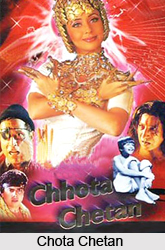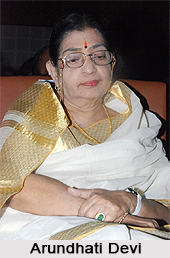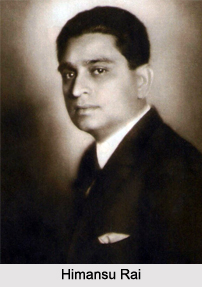 Himanshu Rai is among one of the pioneers of Indian cinema. He is renowned as the founder of the Bombay Talkies in the year 1934. Rai was related with numerous movies, like Goddess in 1922, The Light of Asia in 1925, Siraj in 1926, A Throw of Dice in 1928, and Karma in 1933. Himanshu Rai was married to actress Devika Rani. Himansu Rai had a law degree and was in England to study for the Bar, when Niranjan Pal, a highly talented playwright, offered him roles in his plays. Most notable amongst his dramas was The Goddess. In this, Pal had written the screenplay for Light of Asia based on the poem of the same name by Edwin Arnold. The life of Gautama Buddha was deemed by Rai an interesting subject and he took the script to Emelka Film Company of Munich. Some of his most notable films are discussed below:
Himanshu Rai is among one of the pioneers of Indian cinema. He is renowned as the founder of the Bombay Talkies in the year 1934. Rai was related with numerous movies, like Goddess in 1922, The Light of Asia in 1925, Siraj in 1926, A Throw of Dice in 1928, and Karma in 1933. Himanshu Rai was married to actress Devika Rani. Himansu Rai had a law degree and was in England to study for the Bar, when Niranjan Pal, a highly talented playwright, offered him roles in his plays. Most notable amongst his dramas was The Goddess. In this, Pal had written the screenplay for Light of Asia based on the poem of the same name by Edwin Arnold. The life of Gautama Buddha was deemed by Rai an interesting subject and he took the script to Emelka Film Company of Munich. Some of his most notable films are discussed below:
Light of Asia (1925)
In 1925, Light of Asia, featuring Himansu Rai as the Buddha and Sita Devi as Princess Gopa, was released; the film had a German technical crew, Franz Osten (director), Bertl Schultes (assistant director), Willi Kiermier and Josef Wirsching (cameramen). The film was extremely successful in the Continent, and the initially half-hearted response in London was turned around by the Royal Command performance organized by Rai and others. However, in India, the film was a failure.
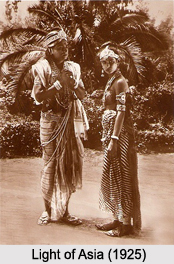 Audiences did not accept the slower pace and lack of melodrama in the film, the very features that won the film accolades abroad. Rai was praised for his solemn calm and controlled style while Sita Devi`s meditative and balanced way of acting came in for applause.
Audiences did not accept the slower pace and lack of melodrama in the film, the very features that won the film accolades abroad. Rai was praised for his solemn calm and controlled style while Sita Devi`s meditative and balanced way of acting came in for applause.
Shiraz (1928)
This film had Himansu Rai in the lead role of Shiraz, the potter`s son who later designs the Taj Mahal. The story was a historically-inaccurate account of Mumtaz Mahal and Shah Jahan, but the movie was a success.
A Throw of Dice (1929)
A joint production with British Instructional Films Limited, London, the film was made by Himansu Rai and the German, headed by Franz Osten as director. Spectacle was by no means missing in this film. The Maharaja of Mysore lent 50 elephants and the grandeur of the gathering at Saint Chishti`s tomb in Pushkar added to the success of the film. It was during this film that Himansu Rai and Devika Rani fell in love, and married once the film was complete.
The Blue Angel (1929)
The introduction of sound prompted Rai to study the technicalities of the procedure and he got the chance to do so in Germany during UFA`s first sound film The Blue Angel. The Depression led to a crisis in the film industry worldwide and sounded the death knell of joint ventures. In 1933, Himansu Rai launched Karma, the studio`s first sound film.1934 - Bombay Talkies was also launched. This was a joint stock company with a distinguished Board of Directors - F.E. Dinshaw, Sir Chimanlal Setalvad, Sir Chunilal B. Mehta, Sir Richard Temple, Sir Pheroze Sethna, Sir Sohrabji Pochkhanawala, and Sir Cowasji Jehangir. Franz Osten directed all Bombay Talkies films of the 30s, and Niranjan Pal joined the team as writer.
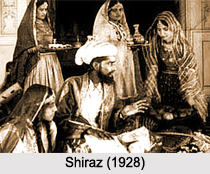
Jawani Ki Hawa (1935)
Devika Rani starred in this highly successful thriller. Khorshed Minocher-Homji, renamed Saraswati Devi, composed the music while her sister (renamed Chandraprabha) acted in the film. They were conservative Parsis and many of their community surrounded the Imperial Cinema in protest. Rather than posing a problem, this act provided a lot of publicity to the studio and the film.
Jeevan Naiya (1936)
This was Ashok Kumar`s debut film. Then in the same year was Achchut Kanya, which starred Ashok Kumar and Devika Rani that was hailed as a masterpiece. The true-to-life dialogues, Saraswatidevi`s music contributed to the success but it was Devika Rani`s luminous performance that stole the show. The Times of India described hers as a performance never seen equalled on the Indian screen.
Some of Himansu Rai`s other films include-
Punar Milan (1940)
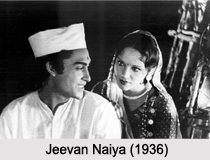 Jhoola, Naya Sansar (1941 )
Jhoola, Naya Sansar (1941 )
This was the first Indian film on journalists and newspapers.
Kismet (1943)
The film was a successful thriller. Both Naya Sansar and Kismet established new genres in film-making. However, in 1954 - Bombay Talkies closed down.
With Himansu Rai`s death in May 1940, Devika Rani had control. She chose Amiya Chatterjee and S. Mukherjee to act as independent producers.
